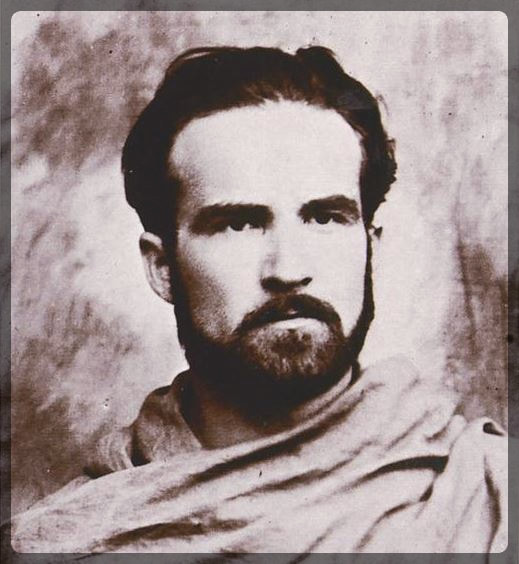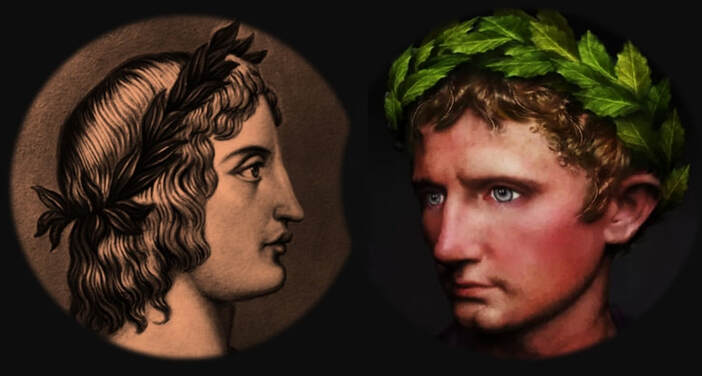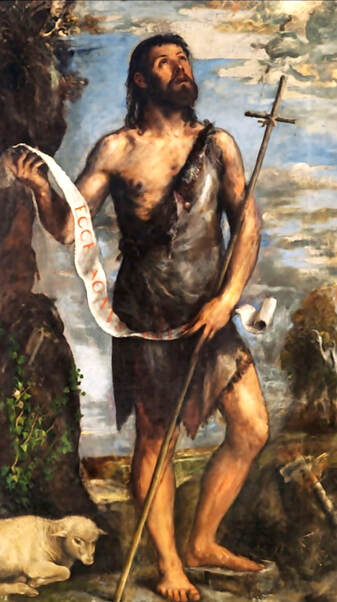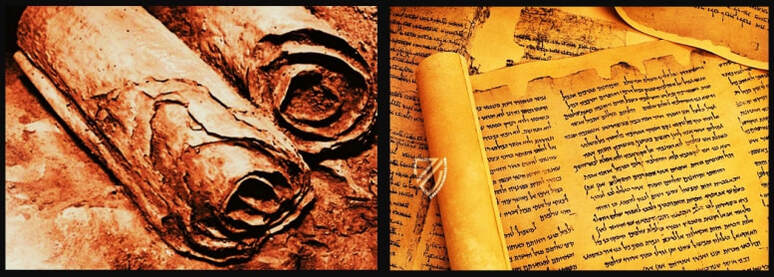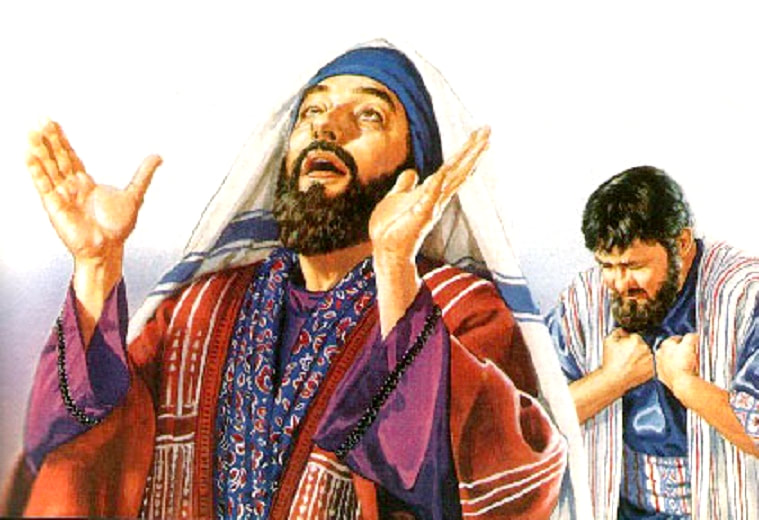MIRCEA ELIADE
(The History of Religious Ideas, Vol. 2)
(The History of Religious Ideas, Vol. 2)
|
|
Knowledge constitutes the original condition of the Absolute - Mircea Eliade
|
|
|
|
John the Baptist
In the fifteenth year of the principality of Tiberius (hence in 28–29 AD, an ascetic, John the Baptist, began traveling about the Jordan district “proclaiming a baptism of repentance for the forgiveness of sins” (Luke 3:1). The historian Flavius Josephus describes him as an “honest man” who exhorted the Jews to practice virtue, justice, and piety. In fact, he was a true prophet, illuminated, irascible, and vehement, in open rebellion.
Paul ...“a doctor of the law and respected by the whole people” (Acts 5:34). Despite the fifteen chapters (out of twenty-eight) that Acts devotes to him, despite the fourteen Epistles that are attributed to him, our knowledge of the life, apostolate, and thought of Saint Paul remains fragmentary. It is Saint Paul’s inestimable contribution that he rightly grasped the elements of the problem and had the courage to fight untiringly for the only solution that he considered just and consistent. Epistles ...the Epistles represent the earliest and most important document of the primitive Church, for they reflect not only the most serious crises of nascent Christianity but also the creative daring of the first Christian theologian. Paul’s conversion can be put at the earliest in 32 and at the latest in 36. As we shall see, faith in the resurrected Christ constitutes the fundamental element of Christianity, especially of the Christianity of Saint Paul. This fact is of great importance, for his Epistles constitute the earliest documents that narrate the history of the Christian community. Gospels The Synoptic Gospels, composed between 70 and 90, collect the traditions transmitted orally transmitted by the earliest Christian communities. But these traditions concern Jesus as well as the resurrected Christ. This does not necessarily lessen their documentary value, for the essential element of Christianity - as is also the case with any religion laying claim to a founder - is precisely memory. Acts of the Apostles The Acts of the Apostles afford us a glimpse of the life of the first Christian community in Jerusalem. Jesus Baptized Immediately after his baptism Jesus withdrew into the wilderness. The Gospels state that “the Spirit drove him out into the wilderness” in order for him to be tempted there by Satan.
Death and resurrection by immersion in water constitute a well-known mythico-ritual scenario that is bound up with a universally documented aquatic symbolism. Gnosticism in Paul ...Saint Paul himself regarded this world as dominated by Satan, and the Jewish and Christian apocalypses predicted the imminent destruction of the earth. Not only did he often use the Hellenistic religious vocabulary (gnosis, mysterion, sophia, kyrios, soter), but he adopted certain conceptions that were foreign to Judaism and to primitive Christianity. Thus, for example, Saint Paul took over the dualistic idea, fundamental to Gnosticism, of a “psychic man” inferior and opposed to the “spiritual man.” The Christian seeks to cast off the carnal man in order to become purely spiritual (pneumatikos). Another dualistic characteristic opposes God to the world, dominated by its “masters” (1 Cor 2:8), in other words, by the “elemental principles” principles” (Gal 4:3-9).
Gnostic Esotericism It must be added that almost all the mythological and eschatological themes employed by the Gnostic authors are earlier than Gnosticism stricto sensu.
A number of images and metaphors used by the Gnostic authors have a venerable history - even a prehistory - and an immense dissemination. Some of them are documented in ancient Iran and in India of the Upanishadic period, in Orphism and Platonism; others are characteristic of Hellenistic syncretism, biblical and intertestamentary Judaism, or the earliest expressions of Christianity. Unlike the Upanishads, Samkhya-Yoga and Buddhism - which deliberately avoid discussing the original cause of the fall of humanity - the redeeming knowledge taught by the Gnostics consists above all in the revelation of a “secret history” (more precisely, a history kept secret from the uninitiated) of the origin and creation of the world, the origin of evil, the drama of the divine redeemer come down to earth to save men, and the final victory of the transcendent God - a victory that will find expression in the conclusion of history and the annihilation of the cosmos.
...the “fall” of man, that is, the incarnation of the soul, was already a prime object of speculation for the Orphic and Pythagorean theologians; it was explained either as the punishment for a sin committed in heaven or as the result of a disastrous choice made by the soul itself. During the earliest centuries of the Christian era, these two myths were amplified and modified by numerous Gnostic and other authors.
Since the world is the result of an accident or a catastrophe, since it is dominated by ignorance and ruled by the powers of evil, the Gnostic finds himself completely alienated from his own culture and rejects all of its norms and institutions.
|
|
|
|
The Roman poet Virgil (70–19 BC) and Emperor Augustus (63 BC-14 AD), tried to halt the incursion of subversive oriental and gnostic schools, whose fatalistic, pessimistic, dispassionate, libertine teachings and outlooks were not conducive to heroic Western sensibilities. Their otherworldly apocalyptic visions didn't accord with the Apollonian tendencies of Western races. Despite the valiant efforts of Virgil and Augustus, anti-heroic, anti-Western precepts entered under the guise of Judaism and Christianity, and the West has been encumbered and plagued ever since. Later Christian apologists worked to downplay the subversive "oriental" elements within their religion.
|
|
|
|
Jewish Influences
...a large number of the mythological images, figures and themes that are employed by Christian authors, and that will become the favorite subjects of European popular books and religious texts... ...From the beginning, it seems that there were well-organized secret groups which disclosed their esoteric doctrines and their unique methods to the initiated.
Jewish Gnosticism ...the Gnostic elements, to at least some degree detectable everywhere, derive in the last analysis from the older Jewish Gnosticism.
Simon Magus ...was worshiped as the “first God,” and his companion, Helen, discovered by Simon in a brothel at Tyre, was regarded as the last and most fallen incarnation of the Thought (Ennoia) of God; redeemed by Simon, Helen-Ennoia became the means of universal redemption. Simon Magus is of interest to the historian of religions especially for the glorification of Helen and the mythology
...awakened by gnosis, the Pneumatics, and they alone, ascend to the Father. Gnostic Principles In the last analysis, the majority of these images - ignorance, amnesia, captivity, sleep, intoxication - become, in Gnostic preaching, metaphors to indicate spiritual death. Gnosis bestows true life, that is, redemption and immortality.
Carpenter and Healer Like so many other “divine men” of the Hellenistic world, Jesus was a physician and thaumaturge, curing all kinds of sicknesses and relieving the possessed. Against the Jewish Priesthood Jesus’ preaching soon began to disquiet the two politically and religiously influential groups, the Pharisees and Sadducees. The former were irritated by the liberties the Nazarene took in regard to the Torah. As for the Sadducees, they sought to avoid the disturbances that were likely to break out after any messianic propaganda. In fact, the Kingdom of God that Jesus preached suggested to some the religious fanaticism and political intransigence of the Zealots.
Two Thieves? Jesus was crucified between two “thieves.” Josephus often used this term - lēistai - to signify "revolutionists." “The context of Jesus’ execution was thus clearly the suppression of Jewish revolt against the rule of Romans and their collaborators in Judea. ...it must be borne in mind that the earliest Christians, Jews of Jerusalem, constituted an apocalyptic sect within Palestinian Judaism. They were in daily expectation of the Second Coming of Christ, the parousia; it was the end of history that preoccupied... ...it was the end of history that preoccupied them, not the historiography of the eschatological expectation.
Peter the False The arrest, trial, and sacrifice of Jesus scattered the faithful. Soon after the arrest, Peter, Jesus’ favorite disciple, denied him three times. Holy Spirit? epiphanies of the Holy Spirit are a rather well-known theme in the history of religions: they are found in Mesopotamia, in Iran, in India. But the context of the Pentecost has a more definite aim: the violent wind, the tongues of fire, and the glossolalia are reminiscent of certain traditions concerning the theophany on Sinai. |
|
|
|
John the Baptist, a figure clearly presented as an ascetic. As Christianity's first prophet, we see that the religion is characteristically and undeniably ascetic, that is - world and body denying. Let us not forget that without the presence of ascetic monks and the monastic tradition, Christianity would long ago have ceased being an important and pervasive institution. Stellar elements are revealed by the artists of biblical characters, as in this case, the figure looks up toward the heavens, frequents the "wilderness" (a code word for the night sky and zodiac), and "prophesizes." The image may signify the constellation of Aquarius, which rose in the night sky during the summer period when the Nile rose to its height. Hence the motif of the "baptizer."
|
|
|
|
Fanatical Jews Crushed
During the war, at the beginning of the summer of 68, a contingent of Vespasian’s army attacked and destroyed the “monastery” of Qumran, situated in the open desert on the shore of the Dead Sea. In all likelihood the defenders were massacred; but on the eve of the disaster they had time to hide a considerable number of manuscripts in large clay vessels.
Teacher of Righteousness The founder of the Qumran community, known to his disciples as the “Teacher of Righteousness,” was a Zadokite priest, hence a member of the legitimate and ultra-orthodox priestly class.
When Simon was proclaimed “prince and high priest for ever,” and the office of high priest was irrevocably transferred from the Zadokites to the Hasmoneans, the Teacher of Righteousness left Jerusalem with a group of disciples and took refuge in the desert of Judah. In all probability the “Evil Priest” execrated in the Qumran texts was Simon; he had persecuted the Teacher of Righteousness in his exile and was even contemplating attacking Qumran when he was assassinated by the governor of Jericho.
The Qumran community was strictly monastic; the earliest Christians lived in the world, they made up a missionary community. Both sects were apocalyptic and messianic.
Priestly Hierarchy at Qumran The directing group was termed the rabbîm (literally "the numerous”)...Twelve laymen and three priests formed the inner circle. The highest office was that of “inspector;” this supreme leader was bound to behave as a “shepherd.” His function is reminiscent of that of the “shepherd” or episkopos among the Christians.
|
|
|
|
The Dead Sea Scrolls were the source of much controversy, and still are. Their content was suppressed by the Church for over 40 years, and the Church succeeded in discrediting honest whistle-blowers such as John Allegro. Allegro emphasized that in addition to ascetic practices and ritual purification, these sects imbibed powerful hallucinogenic potions, under the influence of which they had visions of an apocalypse. Too bad they didn't foresee what actually came to pass - the total destruction of Judea and their own community by the exasperated Romans.
|
|
|
|
After the destruction of Qumran and the dispersal of the Essenes, some of those who escaped probably joined the Christian communities of Palestine. In any case, the apocalyptic and esoteric traditions were maintained in the Christianity of the first two centuries, and they encouraged certain Gnostic tendencies.
Despite the numerous resemblances that we have just mentioned, Essenism and primitive Christianity present different structures and pursue different ends. The Gaonim The most important religious leader of the century, Rabbi Johanan ben Zakkai, who had strongly opposed the armed insurrection, was evacuated in a coffin during the siege of the city. Soon afterward he obtained leave from Titus to establish an elementary school at Jabneh, a village not far from Jaffa. It would be the founding of this school by Rabbi Johanan that would save the spiritual values of the Jewish people, conquered on the national plane and threatened with disappearance.
|
|
|
|
According all historians, the Sadducees (or Priesthood of Zadok) became extinct after the fall of the Temple in AD 70. However, what really happened is that during the Jewish Revolt and before the Roman crackdown on Judea, high level Pharisees and Sadducees were quietly allowed to escape to Babylon where they established "Rabbinical Colleges." Actually, these had little to do with Judaism, being refuges for the hidden funders of later groups such as Sabbateans, Frankists and Illuminati. In Judaism the hidden Luciferians are known as the Gaonim or "Princes of Light." After the suppression of the Knights Templars in the fourteenth century, members of the Gaonate re-entered western lands under the name Freemason or "Brothers (or Sons) of the Sun." They are in fact descended from Setian-Atonists whose interest in and connection with religious Judaism is purely incidental and subversive. Indeed, the latter order has long concealed itself behind many Christian societies and movements. (Here for more...)
Why is there also no trace in the entire Masonic ritual of Church Christianity? Why do the Masons not talk of the birth of Christ but, like the Jews, of the creation of the world? Why is there no Christian symbol in Freemasonry? Why the circle, the square and the scales? Why not the cross and other instruments of torture? Why not, instead of Wisdom, Strength, and Beauty, the Christian trio: Faith, Charity, Hope? - Gotthold Salomon (Jewish Mason) |
|
|
|
One of the symbols commemorating the "Jewish" connection to Masonry is the coffin. This motif puzzles most people, and all sorts of interpretations abound. It could represent the dead pharaoh Seqenenre Tao, murdered by the three brothers (the co-called Jewes); it could represent the death of Hiram Abiff, builder of the first Temple of Solomon, or it could be a reference to the Knights Templar who preceded Masonry. Or it might signify Yohanan ben Zakkai, the Jewish sage smuggled out of Judea at the height of the Roman crackdown in AD 70. The renowned rabbi was taken out of the city in a coffin. What better symbol and metaphor would be favored by the Gaonim to commemorate their survival, that is of the Setian-Atonists who quickly established new headquarters in Babylon and elsewhere? We left a dead city, a dead civilization, forgotten by all, yet we live again, thrice-born Princes of Light shining in the darkness. (Here for more...)
|
|
|
|
Delusion & Self-Sadism
Along with the great crisis that shook the Western Church,60 the fourteenth century is characterized characterized by a series of calamities and cosmic scourges: comets, solar eclipses, floods, and, above all, from 1347 on, the terrible epidemic of the plague, “the Black Death.” The processions of flagellants multiplied themselves in order to move God to pity. ...proud of their self-torture, and despite their theological ignorance, the flagellants believed their activities could substitute for the charismatic and thaumaturgical powers of the Church. In order to expiate their sins and above all the sins of the world, itinerant lay groups traversed the countryside under the direction of a “master.” On arrival in a city, the procession - sometimes as large as several thousand people - made its way to the cathedral, chanting hymns and forming several circles. While sighing and crying, the penitents called upon God, Christ, and the Virgin, and began to flagellate themselves with such violence that their bodies became a swollen mass of bruised flesh. ...the entire age seemed obsessed with death and with the sufferings that awaited the deceased in the afterworld. Death impressed the imagination more powerfully than the hope in the resurrection.
“The cadaver is now everywhere, even on the tombstone.” The danse macabre (“dance of death”), in which a dancer represents represents Death himself, drawing along men and women of all ages and classes (kings, monks, bishops, bourgeois, etc.) became a favorite subject in paintings and literature. Female Sects According to the trials of the Inquisition in Milan in 1384 and 1390, two women had acknowledged belonging to a society led by Diana Herodias. ...Diana’s faithful had nothing in common with the makers of satanic maleficia. Most likely, their rites and visions were prolongations of an archaic fertility cult. |
|
